How self-discovery fuels the journey of successful entrepreneurship.
At Firestarter, we’re lucky enough to work with all kinds of entrepreneurs who are navigating the complexities of building and scaling their ventures. But one thing they all have in common is that they’re tightly intertwined with their businesses – which makes the journey intensely personal, taxing, and, at times, stressful.
So how do we plot where we are at any given time? Can we see growth and opportunity when the universe seems to be conspiring against us? How can looking within help us lead with authenticity?
We draw heavily on trusted psychological frameworks to help us make sense of such questions, and here, Fritz Perls and his ‘Layers of Neurosis’ can help us to understand our inner world. Although, for the purpose of this blog, I prefer to call them ‘layers of self-discovery’.
It’s deep, deep stuff! But worth diving in regardless. So, where do we start? Well, at the surface, of course.
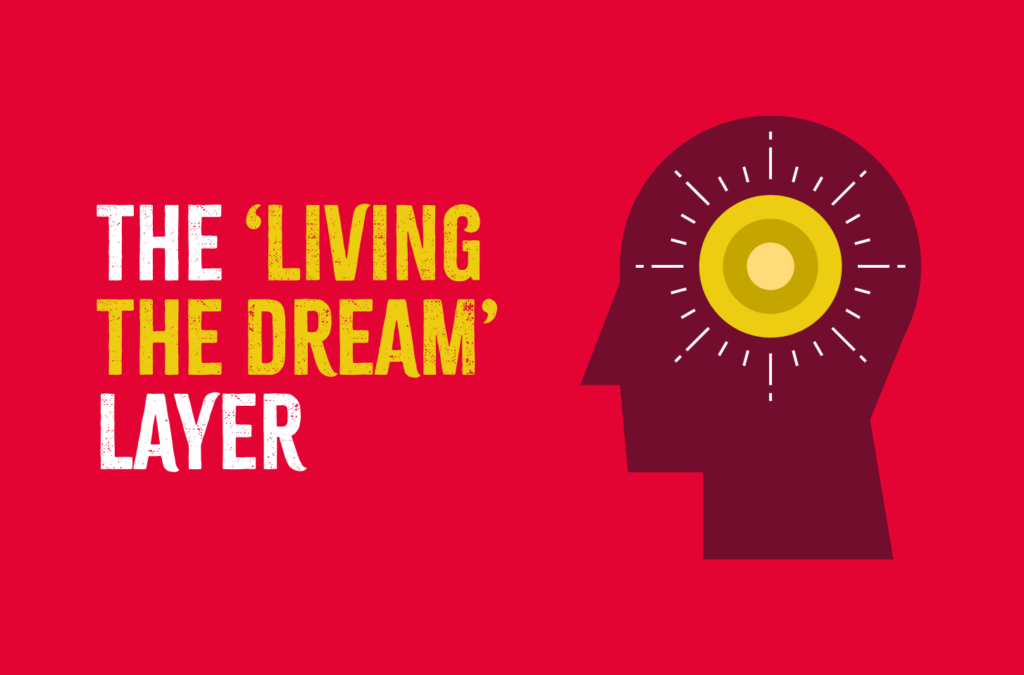
Living the dream (the cliché layer)
Anyone who’s spent any time in meetings with me will know that my stock response to the ‘how are you’ and ‘how’s your day’ questions is often ‘living the dream’ – a mental shortcut that avoids the need for any real exploration.
These bog-standard responses we rattle off in our daily encounters with others rarely have any connection to our true feelings and are often ‘outward’ facing, aimed to satisfy conventions of politeness.
For entrepreneurs…
While these cliches can serve a purpose, think of them as the foot in the door, like brief opening lines at networking drinks. If you become too reliant on them, they’ll come across as inauthentic and evasive. And often a blocker to deeper, more meaningful conversations.
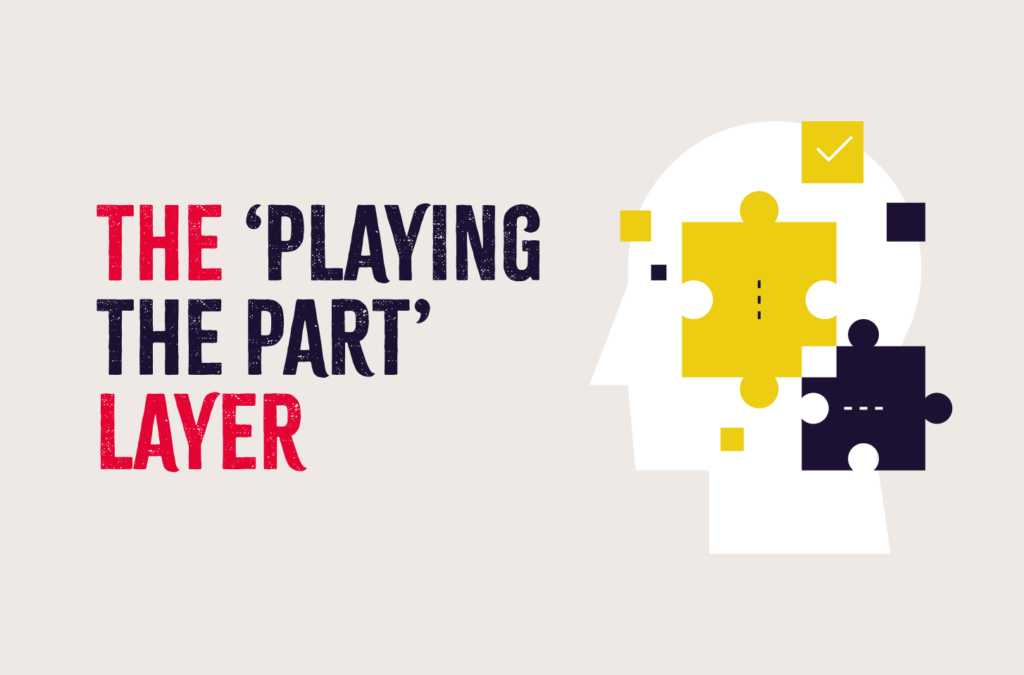
Playing the part (the compliant-phoney layer)
From a young age, we learn how to mould ourselves according to our social context to be accepted and to form attachments. For example, at school, we learn to play by the rules and that good marks will earn us praise and recognition.
Often, this involves:
- making an effort to fit in – even at the cost of our own sense of identity
- faking it to impress others or convince ourselves
- seeking acceptance to gain a ‘seat at the table’ or join the ‘club’.
This dynamic is also true in the business world, especially when you’re just starting out. As budding entrepreneurs, we may not fully know who we are in a business sense yet. We’re not quite ready to stand out, preferring instead to blend into our niche and be seen as accepted equals to our competitors and worthy of consideration.
For example, when I stepped into Firestarter, I launched into the unknown with no track record in brand and identity. Like many others transitioning and pivoting, I felt under enormous pressure to ‘fake it till I made it’.
For entrepreneurs…
- Recognise that maintaining a ‘game face’ when it’s not our ‘natural’ style can lead to dissonance, stress and possible burnout.
- As we step into different roles and personas, it can be healthy to experiment – adjusting how we respond and present ourselves to the outside world.
- Each step into the unknown can feel like a giant leap and life continues to demand different things from us. Our ‘fixed’ views of self, the world and others can flex to breaking point. It’s time to replace them with something more fluid and flexible.
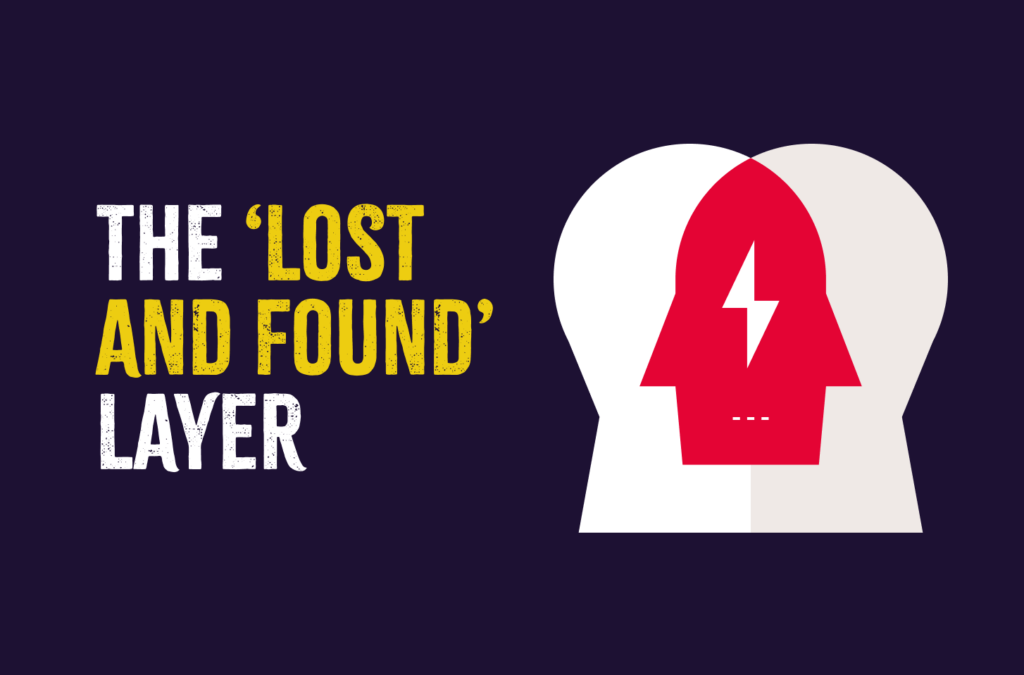
Lost and found (the impasse layer)
In this layer, we become clearer on where we’re heading, but deciding which path to take can prove elusive. We run into early barriers, setbacks and challenges. Failure gets us further, but how do we know if we’re on track to success or on the wrong path?
Our tendency is to look outside for answers rather than within. To rely on Audible authors, YouTube tutorials or any number of external sources for guidance and insight – including expensive strategy consultants.
This might play out like this:
- we feel like we’re losing direction and orientation,
- we lack the energy to move forward, and
- experience a new sense of (dis)ease with playing the part – without a clear alternative.
For entrepreneurs…
- Feeling ‘stuck’ is normal and can actually be a protective mechanism as we reach difficult decisions and align our head with our ‘gut’.
- Looking outside ourselves for all the answers can lead to information overload or even externalising responsibility for change.
Some pathways simply haven’t been mapped out in full. This is where mentorship, coaching and peer support may help us to gain perspective from others on different but relatable journeys.
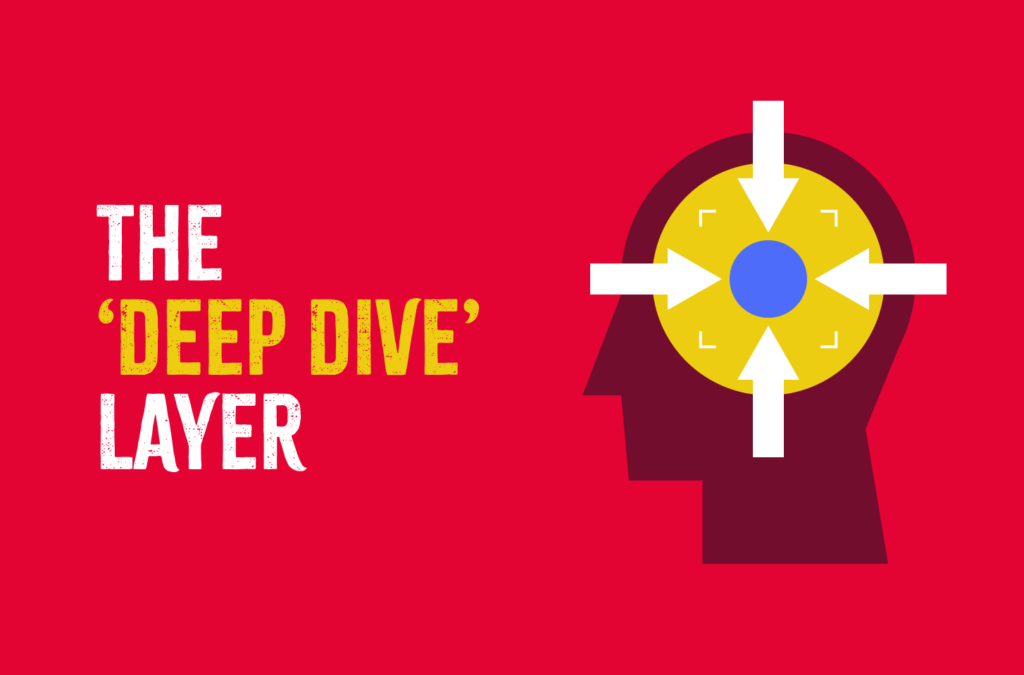
Deep dive (the implosive layer)
The inauthenticity of ‘playing the part’ leads to the struggles of the ‘lost and found’ phase, but these frustrations are critical to getting us here. This crucial layer is where we decide to draw a line on the internal dissonance we’ve battled with until now.
In this moment of clarity, we understand that we need to ‘get out of our own way’. So we retreat and withdraw. In other words, we dive deep. And this is when the ‘magic’ really happens – when we face up to our internal conflicts and begin to look inside for the answers to our growth and journey ahead.
This introspection enables us to connect with and ‘rediscover’ ourselves, and loosen our grip on our ‘stage-managed’ personas. Finally, we can let the mask slip.
For entrepreneurs…
- It takes courage to look inside and really accept what’s going on. Practical exercises, like journalling and meditation, can help us process those inner voices.
- We also need courage to accept our ‘failures’ and own our ‘shortcomings’ – yet while this is an essential part of the process, it’s possible to do so with self-care.
- A ‘problem shared is a problem halved’. You don’t have to face every challenge alone – it may help the growth of others if you can share this part of your story.
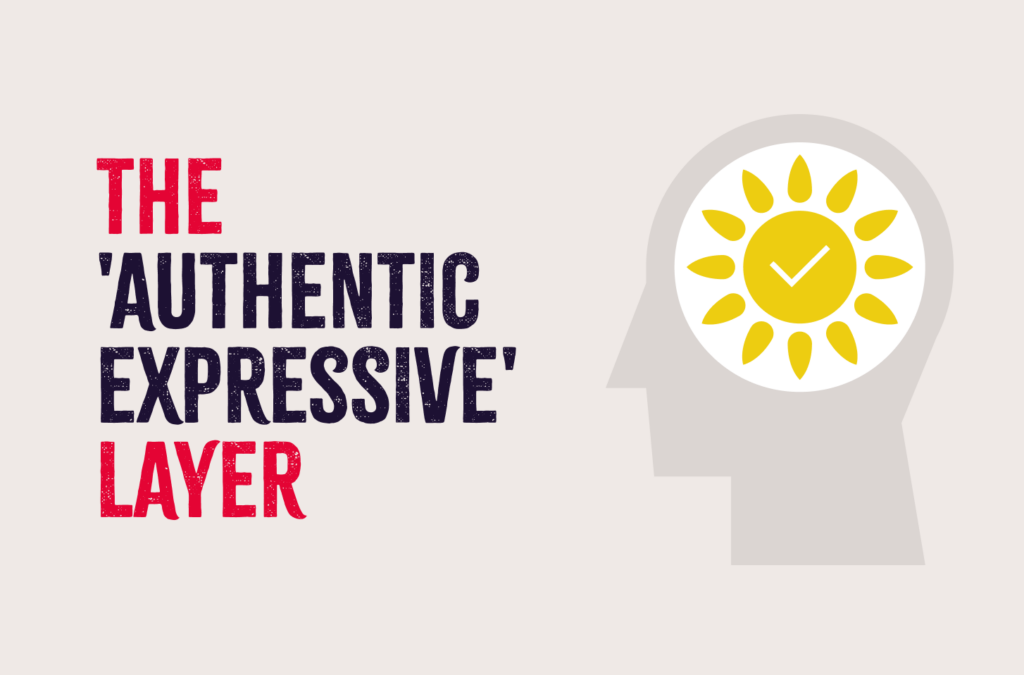
Authentic expression (the explosive layer)
This is when we emerge into the world as our true selves – like a butterfly from a chrysalis. In sync with what we feel and know to be authentic about ourselves, others and the world around us. We can fully embrace ‘what is’, not what ‘ should’ or ‘must’ be.
We feel confident to stand up and stand out, and to claim ownership of our niche despite our shortcomings and failings (and on occasions precisely because of them). Here, we’re set up to experience everything, to be propelled into action by the sum of our energy and potential.
This may result in:
- living intentionally according to what we know to be true,
- differentiating ourselves on the basis of our own ‘unique value’, and
- experiencing everything life has to offer more fully – challenges and all.
For entrepreneurs:
- This authenticity can be a wellspring of creativity. Freedom from conflict and conformity results in a release of energy and enthusiasm.
- Take others with you on the journey. Your team and partners may be in the same seas but don’t assume you’re all in the same boat. Consider how you can weather the storms together and move forward in unison.
- Channel your new-found energy into what’s most important. Connect your mission (what you do day in, day out) with your purpose (why you’re in business) and your vision (the change you want to see).
Conclusion
While this framework describes a deeply personal journey of growth and renewal, we see strong parallels between this and the journeys of fledgling entrepreneurs and their businesses as they mature and find their own way towards creating high-impact brand identities.
This involves fitting in, occasionally feeling lost and stuck, looking to the outside world for answers, eventually going deep to find the real truth, and embodying it for all the world to see.
Our work with entrepreneurs usually starts when they arrive at the ‘lost and found’ layer, but you can see how the steps are echoed in our DARE model for creating brands: Differentiation, Authenticity, Resonance, and Expression at every touchpoint.
Through our branding programmes, we work closely with our clients to help them identify what makes them special and unique. We go deep as the layers of self-discovery peel away, play out, and build upon each other – as confidence grows and self-evaluation becomes as important as credentials and external recognition. Then once complete, our clients break through to live their authentic identity and experience entrepreneurial freedom.
It’s important to remember that this journey is rarely a one-off. We find ourselves cycling through these stages several times as our businesses grow, and we face new challenges.
Taking theories like Perls’ and making them accessible and relevant is one example of how we combine psychology and creativity to create brand identities. Brands that ultimately lead to healthier, more resilient businesses and more fulfilling lives.
Ready to refine your personal brand? Connect with us today.



